Rapid Growth of KDP Crystals in the [101] Direction
Abstract
1. Introduction
2. Materials and Methods
3. Results and Discussion
3.1. (100) Surface Microtopography under Different Supersaturation
3.2. (101) Surface Microtopography under Different Supersaturation
3.2.1. Microtopography under Low Supersaturation
3.2.2. Microtopography under High Supersaturation
3.3. Triangular Pit Microtopography Revealed on the (101) Surface
3.4. Crystal Growth
3.5. Performance Characteration
3.5.1. Optical Spectrum Transmittance
3.5.2. Crystalline Perfection
3.5.3. Laser Damage Threshold
4. Conclusions
Author Contributions
Funding
Conflicts of Interest
References
- Zaitseva, N.; Carman, L. Rapid Growth of KDP-Type Crystals. Prog. Cryst. Growth Charact. Mater. 2001, 43, 1–118. [Google Scholar] [CrossRef]
- Chernov, A.A.; Zaitseva, N.P.; Rashkovich, L.N. Secondary Nucleation Induced by the Cracking of a Growing Crystal: KH2PO4 (KDP) and K(H,D)2PO4 (DKDP). J. Cryst. Growth 1990, 102, 793–800. [Google Scholar] [CrossRef]
- Zaitseva, N.P.; De Yoreo, J.J.; DeHaven, M.R. Rapid growth of large-scale (40–55 cm) KH2PO4 crystals. J. Cryst. Growth 1997, 180, 255–262. [Google Scholar] [CrossRef]
- Brooks, R.; Horton, A.T.; Torgesen, J.L. Occlusion of Mother Liquor in Solution-Grown Crystals. J. Cryst. Growth 1968, 2, 279–283. [Google Scholar] [CrossRef]
- Rashkovich, L.N.; Shekunov, B.Y. Morphology of Growing Vicinal Surface; Prismatic Faces of ADP and KDP Crystals in Solutions. J. Cryst. Growth 1990, 100, 133–144. [Google Scholar] [CrossRef]
- Slaminko, P.; Myerson, A.S. The Effect of Crystal Size on Occlusion Formation during Crystallization from Solution. Aiche J. 1981, 27, 1029–1031. [Google Scholar] [CrossRef]
- Brice, J.C.; Bruton, T.M. The Stability of Facets on Growing Crystals. J. Cryst. Growth 1974, 26, 59–60. [Google Scholar] [CrossRef]
- Rodriquez, R.; Aguiló, M.; Tejada, J. Unstable Growth of ADP Crystals. J. Cryst. Growth 1979, 47, 518–526. [Google Scholar] [CrossRef]
- Chernov, A.A. Formation of Crystals in Solutions. Contemp. Phys. 1989, 30, 251–276. [Google Scholar] [CrossRef]
- Potapenko, S.Y. Morphological Instability of Steps during Crystal Growth from Solution Flow. J. Cryst. Growth 1996, 158, 346–358. [Google Scholar] [CrossRef][Green Version]
- Potapenko, S.Y. Formation of Solution Inclusions in Crystal under Effect of Solution Flow. J. Cryst. Growth 1998, 186, 446–455. [Google Scholar] [CrossRef]
- Robey, H.F.; Potapenko, S.Y. Ex Situ Microscopic Observation of the Lateral Instability of Macrosteps on the Surfaces of Rapidly Grown KH2PO4 Crystals. J. Cryst. Growth 2000, 213, 355–367. [Google Scholar] [CrossRef]
- Robey, H.F.; Maynes, D. Numerical Simulation of the Hydrodynamics and Mass Transfer in the Large Scale, Rapid Growth of KDP Crystals. Part 1: Computation of the Transient, Three-Dimensional Flow Field. J. Cryst. Growth 2001, 222, 263–278. [Google Scholar] [CrossRef]
- Robey, H.F. Numerical Simulation of the Hydrodynamics and Mass Transfer in the Large Scale, Rapid Growth of KDP Crystals—2: Computation of the Mass Transfer. J. Cryst. Growth 2003, 259, 388–403. [Google Scholar] [CrossRef]
- Bordui, P.F.; Motakef, S. Hydrodynamic Control of Solution Inclusion during Crystal Growth of KTiOPO4 (KTP) from High-Temperature Solution. J. Cryst. Growth 1989, 96, 405–412. [Google Scholar] [CrossRef]
- Vartak, B.; Yeckel, A.; Derby, J.J. Time-Dependent, Three-Dimensional Flow and Mass Transport during Solution Growth of Potassium Titanyl Phosphate. J. Cryst. Growth 2005, 281, 391–406. [Google Scholar] [CrossRef]
- Balamurugan, S.; Ramasamy, P. Bulk Growth of <101> KDP Crystal by Sankaranarayanan—Ramasamy Method and Its Characterization. Mater. Chem. Phys. 2008, 112, 1–4. [Google Scholar] [CrossRef]
- Dinakaran, S.; Verma, S.; Das, S.J.; Bhagavannarayana, G.; Kar, S.; Bartwal, K.S. Investigations of Crystalline and Optical Perfection of SHG Oriented KDP Crystals. Appl. Phys. A 2010, 99, 445–450. [Google Scholar] [CrossRef]
- Sharma, S.K.; Verma, S.; Singh, Y.; Bartwal, K.S.; Tiwari, M.K.; Lodha, G.S.; Bhagavannarayana, G. Investigations of Structural Defects, Crystalline Perfection, Metallic Impurity Concentration and Optical Quality of Flat-Top KDP Crystal. Opt. Mater. 2015, 46, 329–338. [Google Scholar] [CrossRef]
- Tu, H.; Zhao, Y.; Yue, Y.; Fan, F.; Hu, Z. Shape-Controlled Growth and Characterization of a Large KDP. Cryst. Crystengcomm 2015, 17, 6669–6673. [Google Scholar] [CrossRef]
- He, Y.; Zeng, J.; Wu, D.; Su, G.; Yan, M. New Technology of KDP Crystal Growth. J. Cryst. Growth 1996, 169, 196–198. [Google Scholar] [CrossRef]
- Salo, V.I.; Voronov, A.P.; Tkachenko, V.F.; Babenko, G.N.; Makoveev, A.V. Growth of KDP Single Crystal Blocks in Defined Crystallographic Direction. J. Cryst. Growth 2011, 337, 13–19. [Google Scholar] [CrossRef]
- Thomas, T.N.; Land, T.A.; Martin, T.; Casey, W.H.; DeYoreo, J.J. AFM Investigation of Step Kinetics and Hillock Morphology of the {100} Face of KDP. J. Cryst. Growth 2004, 260, 566–579. [Google Scholar] [CrossRef]
- Chernov, A.A.; Rashkovich, L.N. Spiral Crystal Growth with Nonlinear Dependence of Step Growth Rate on Supersaturation; the {110} Faces of KH2PO4 Crystals in Aqueous Solution. J. Cryst. Growth 1987, 84, 389–393. [Google Scholar] [CrossRef]
- Voronkov, V.V.; Rashkovich, L.N. Step Kinetics in the Presence of Mobile Adsorbed Impurity. J. Cryst. Growth 1994, 144, 107–115. [Google Scholar] [CrossRef]
- Land, T.A.; Martin, T.L.; Potapenko, S.; Palmore, G.T.; De Yoreo, J.J. Recovery of Surfaces from Impurity Poisoning during Crystal Growth. Nature 1999, 399, 442–445. [Google Scholar] [CrossRef]
- Chernov, A. Modern Crystallography III. Cryst. Growth 1984, 36, 209. [Google Scholar] [CrossRef]
- Robey, H.F.; Potapenko, S.Y.; Summerhays, K.D. “Bending” of Steps on Rapidly Grown KH2PO4 Crystals Due to an Inhomogeneous Surface Supersaturation Field. J. Cryst. Growth 2000, 213, 340–354. [Google Scholar] [CrossRef]
- De Yoreo, J.J.; Burnham, A.K.; Whitman, P.K. Developing KH2PO4 and KD2PO4 Crystals for the World’s Most Power Laser. Int. Mater. Rev. 2002, 47, 113–152. [Google Scholar] [CrossRef]
- De Yoreo, J.J.; Land, T.A.; Lee, J.D. Limits on Surface Vicinality and Growth Rate Due to Hollow Dislocation Cores on KDP { 101 }. Phys. Rev. Lett. 1997, 78, 4462–4465. [Google Scholar] [CrossRef]
- De Vries, S.A.; Goedtkindt, P.; Bennett, S.L.; Huisman, W.J.; Zwanenburg, M.J.; Smilgies, D.-M.; De Yoreo, J.J.; van Enckevort, W.J.P.; Bennema, P.; Vlieg, E. Surface Atomic Structure of KDP Crystals in Aqueous Solution: An Explanation of the Growth Shape. Phys. Rev. Lett. 1998, 80, 2229–2232. [Google Scholar] [CrossRef]
- Coriell, S.R.; Murray, B.T.; Chernov, A.A.; McFadden, G.B. Step Bunching on a Vicinal Face of a Crystal Growing in a Flowing Solution. J. Cryst. Growth 1996, 169, 773–785. [Google Scholar] [CrossRef]
- Yoreo, J.J.D.; Vekilov, P.G. Principles of Crystal Nucleation and Growth. Rev. Mineral. Geochem. 2003, 54, 57–93. [Google Scholar] [CrossRef]
- Ramasamy, G.; Bhagavannarayana, G.; Meenakshisundaram, S. The Concentration Effects of S-, p-, d- and f-Block Element Doping on the Growth, Crystalline Perfection and Properties of KDP Crystals. CrystEngComm 2012, 14, 3813–3819. [Google Scholar] [CrossRef]
- Lal, K.; Bhagavannarayana, G. A High-Resolution Diffuse X-Ray Scattering Study of Defects in Dislocation-Free Silicon Crystals Grown by the Float-Zone Method and Comparison with Czochralski-Grown Crystals. J. Appl. Cryst. 1989, 22, 209–215. [Google Scholar] [CrossRef]
- Bhagavannarayana, G.; Parthiban, S.; Meenakshisundaram, S. An Interesting Correlation between Crystalline Perfection and Second Harmonic Generation Efficiency on KCl- and Oxalic Acid-Doped ADP Crystals. Cryst. Growth Des. 2008, 8, 446–451. [Google Scholar] [CrossRef]
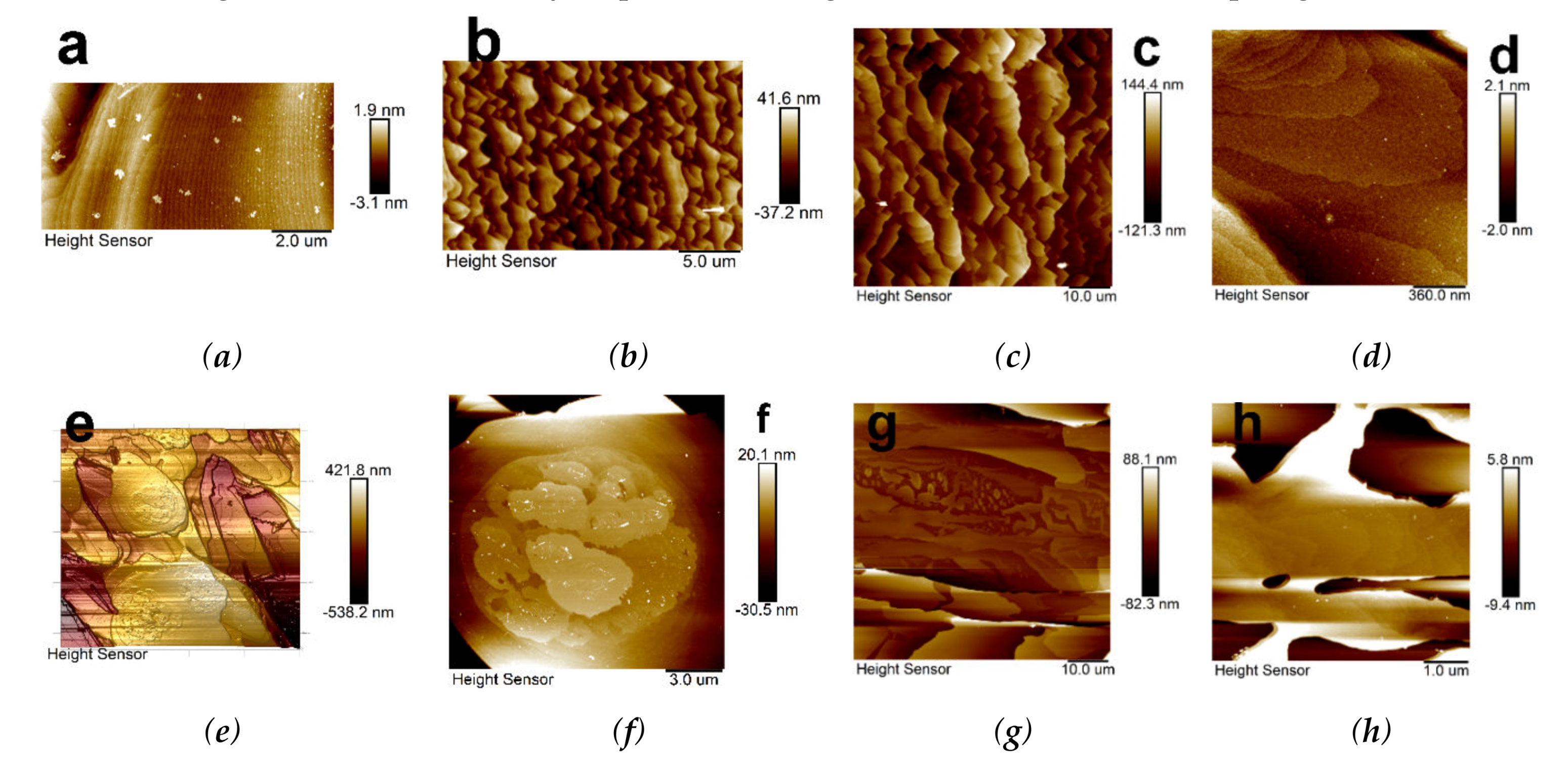
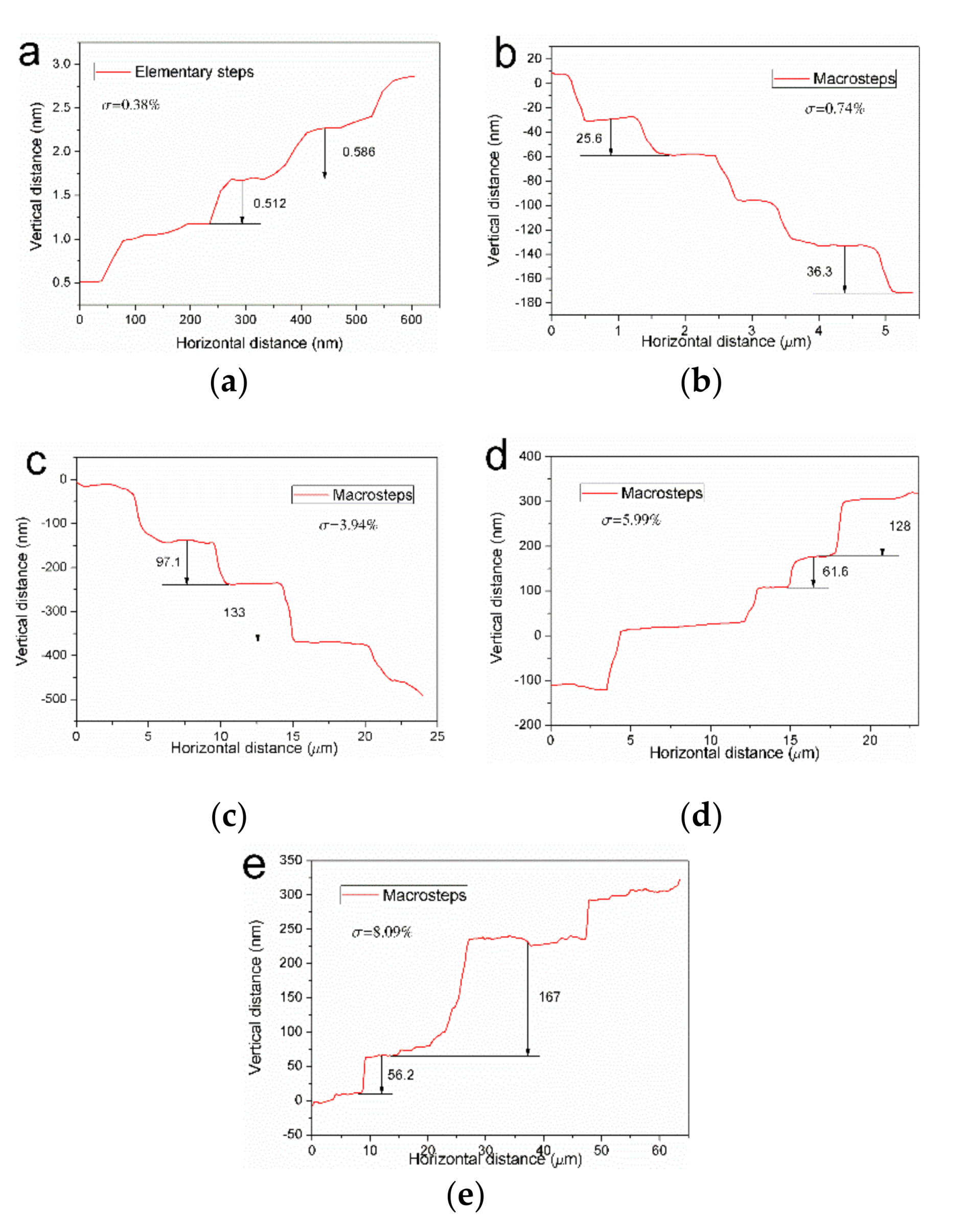
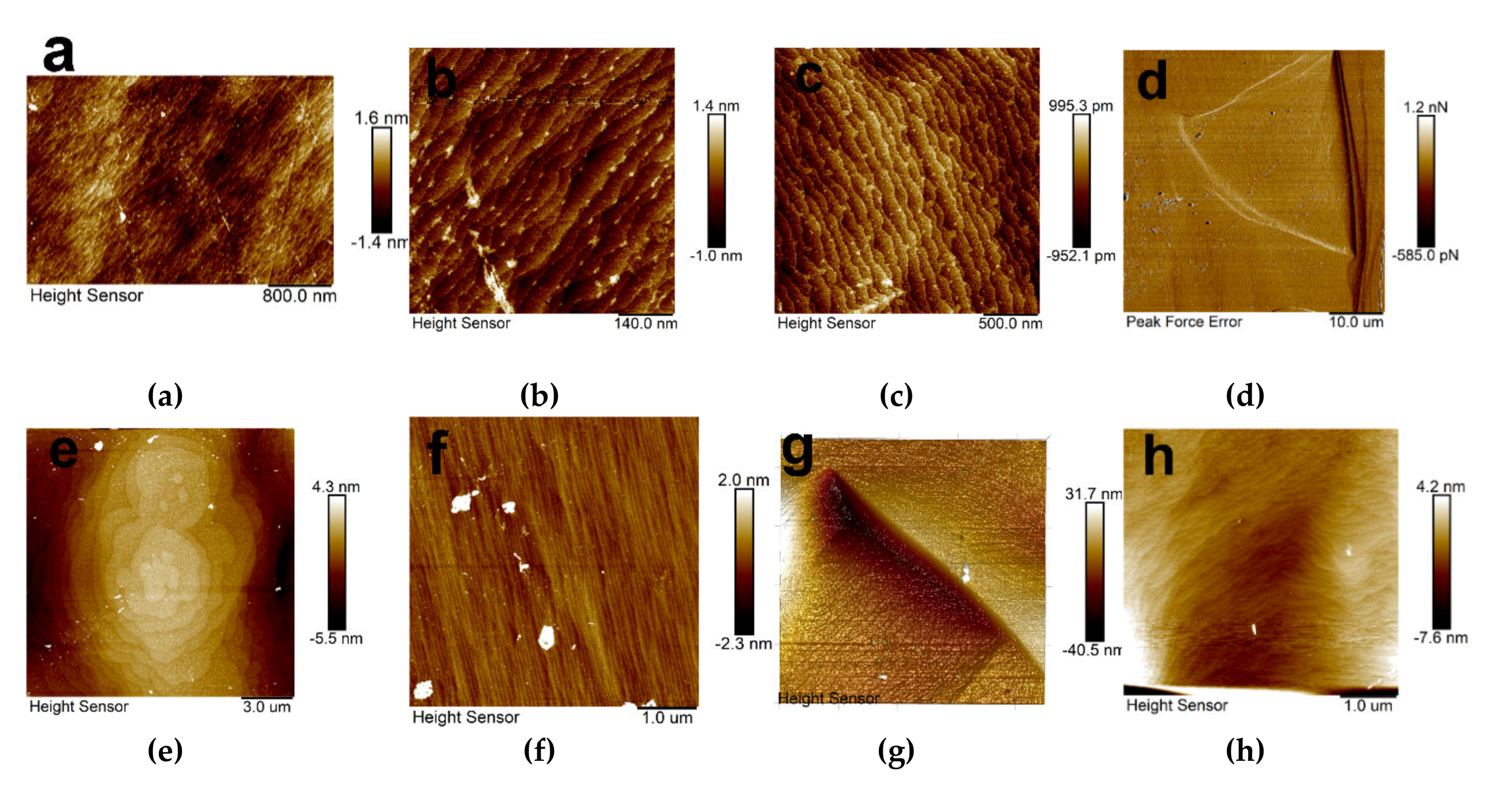
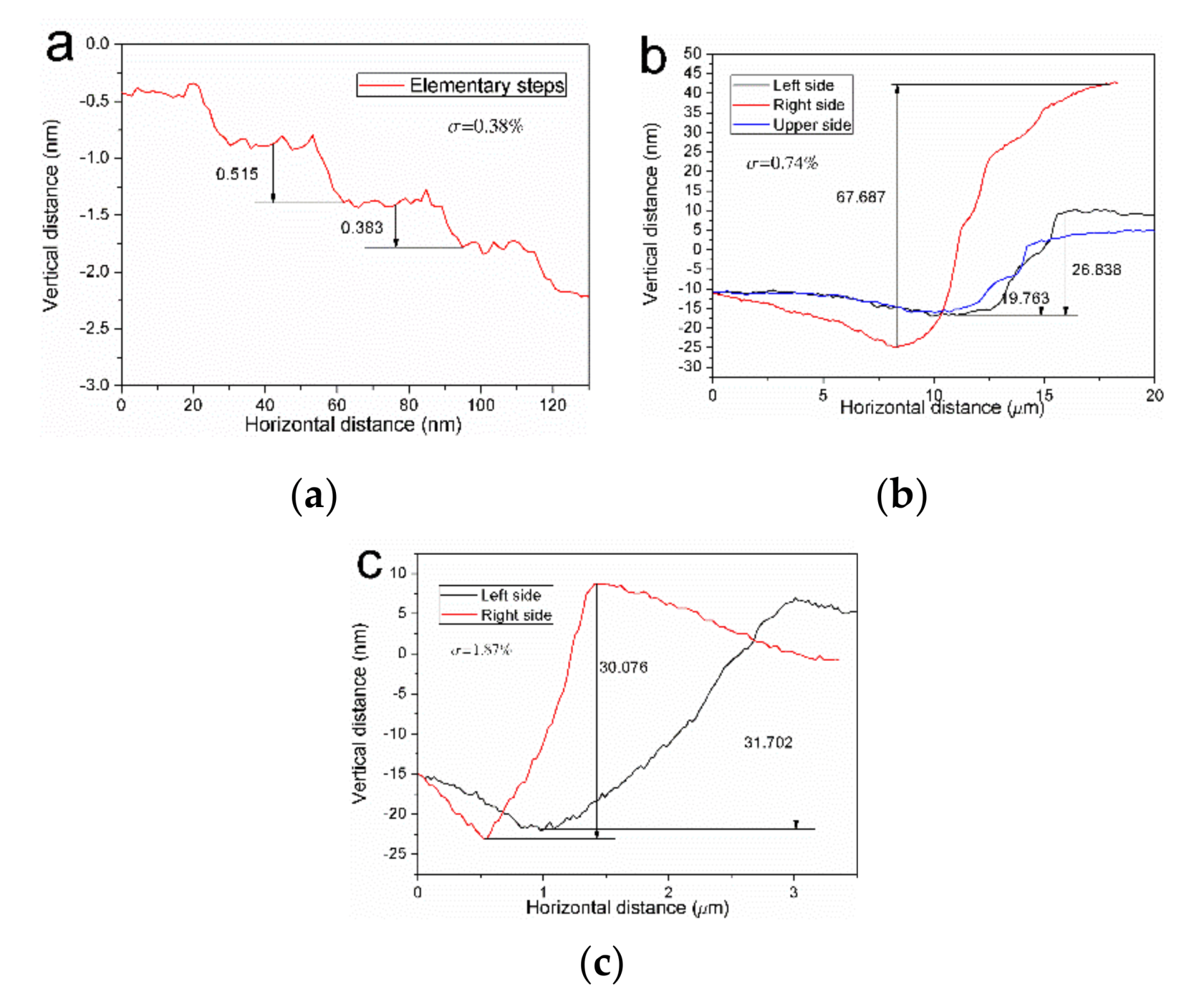
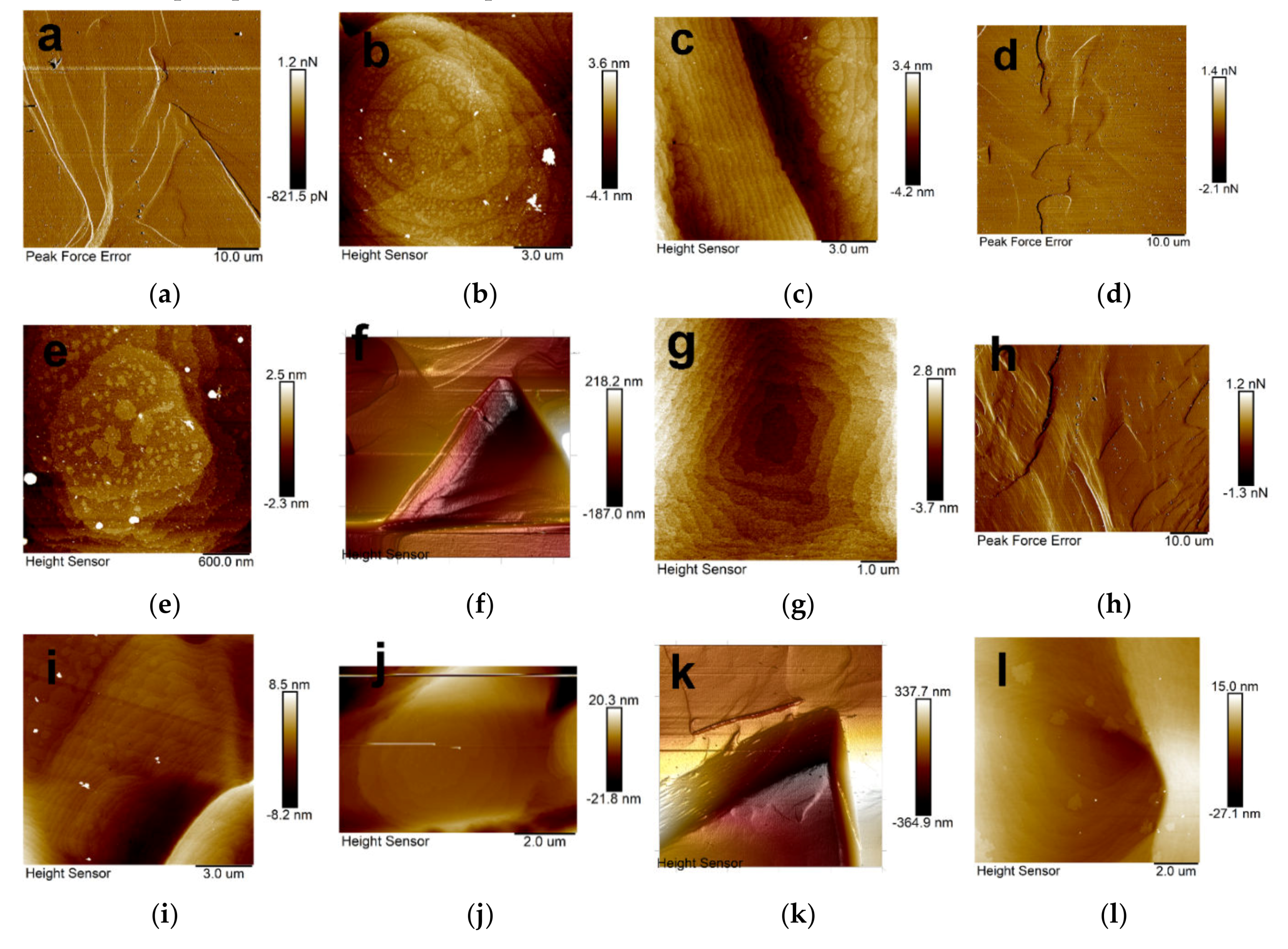
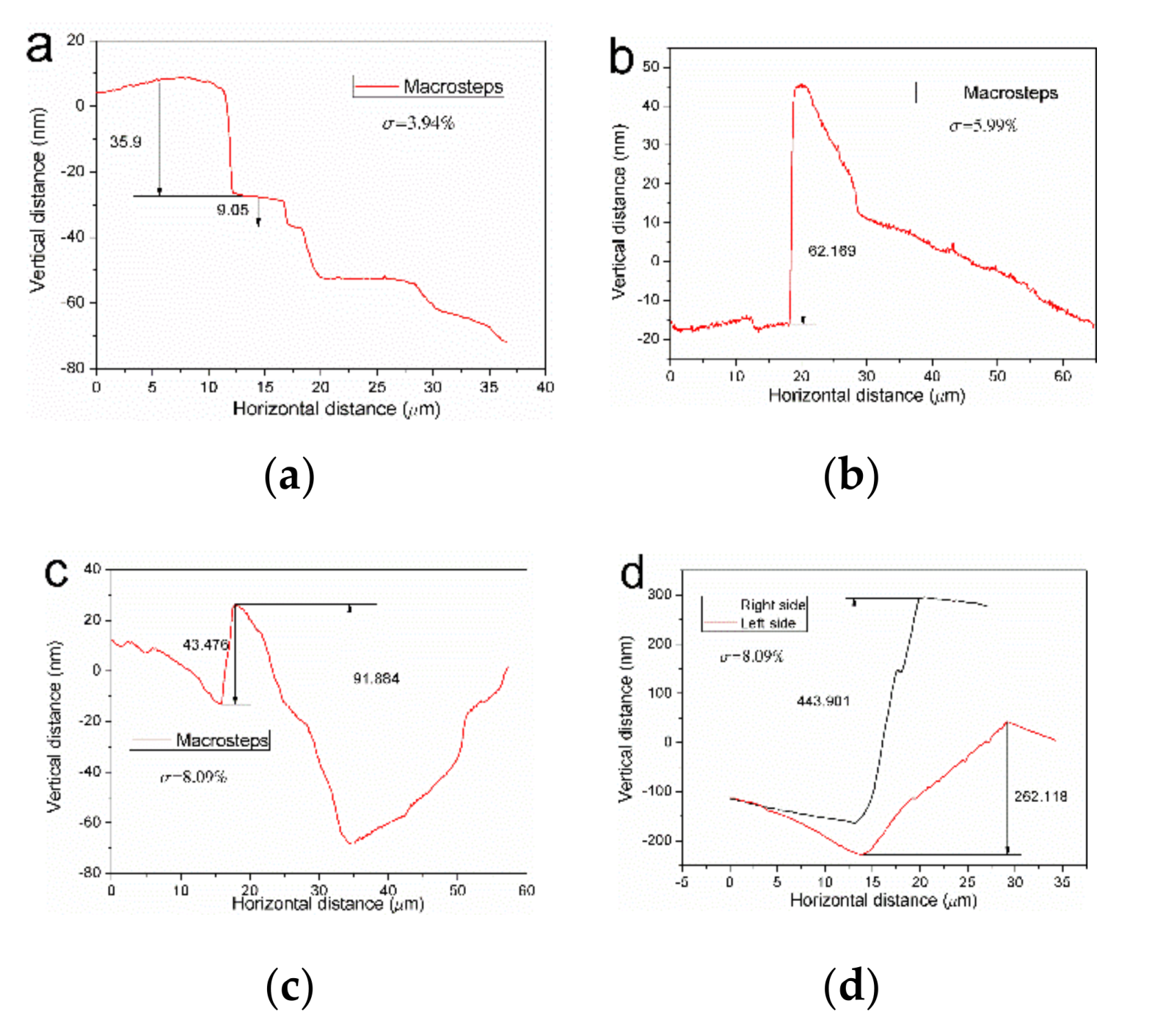
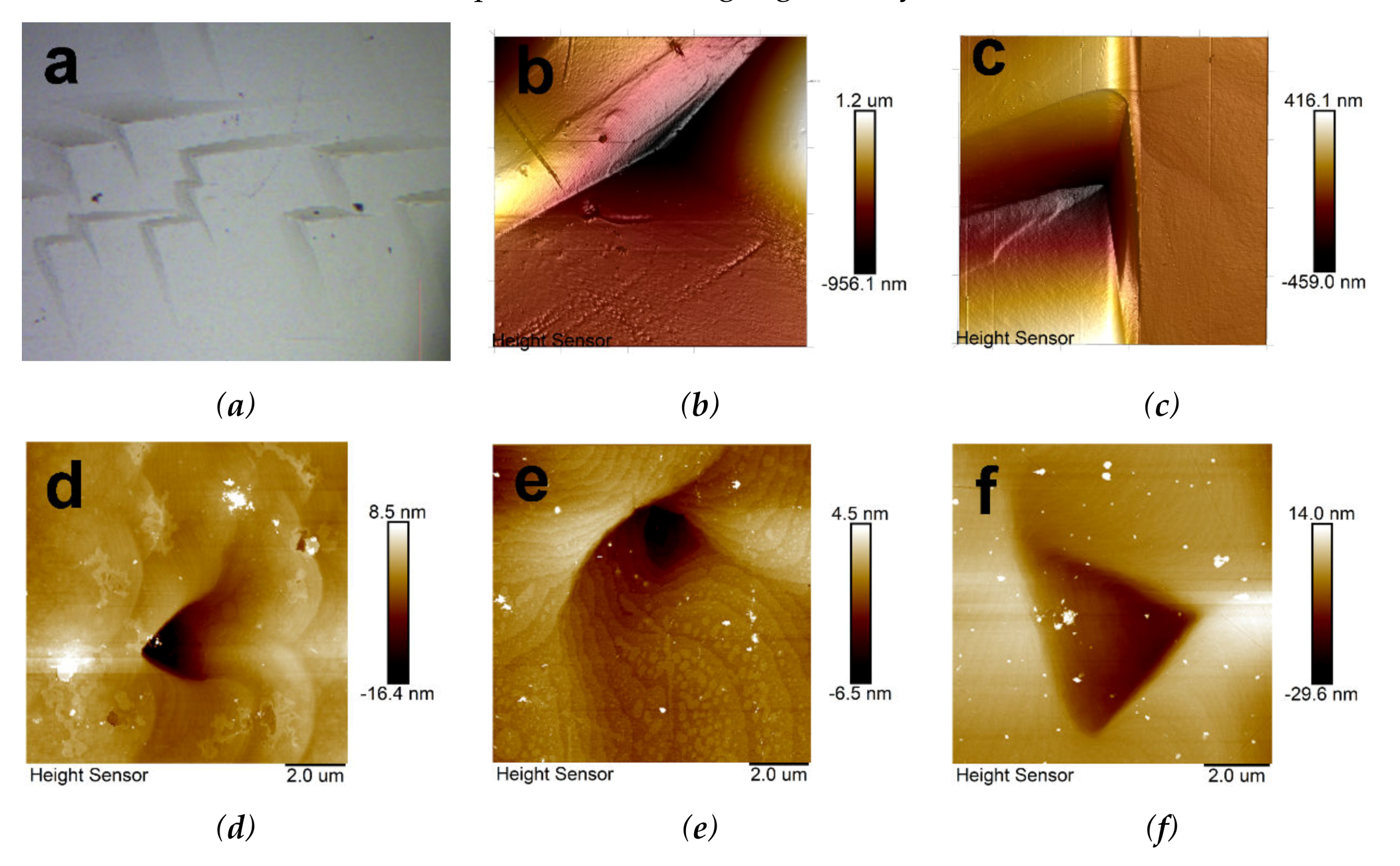
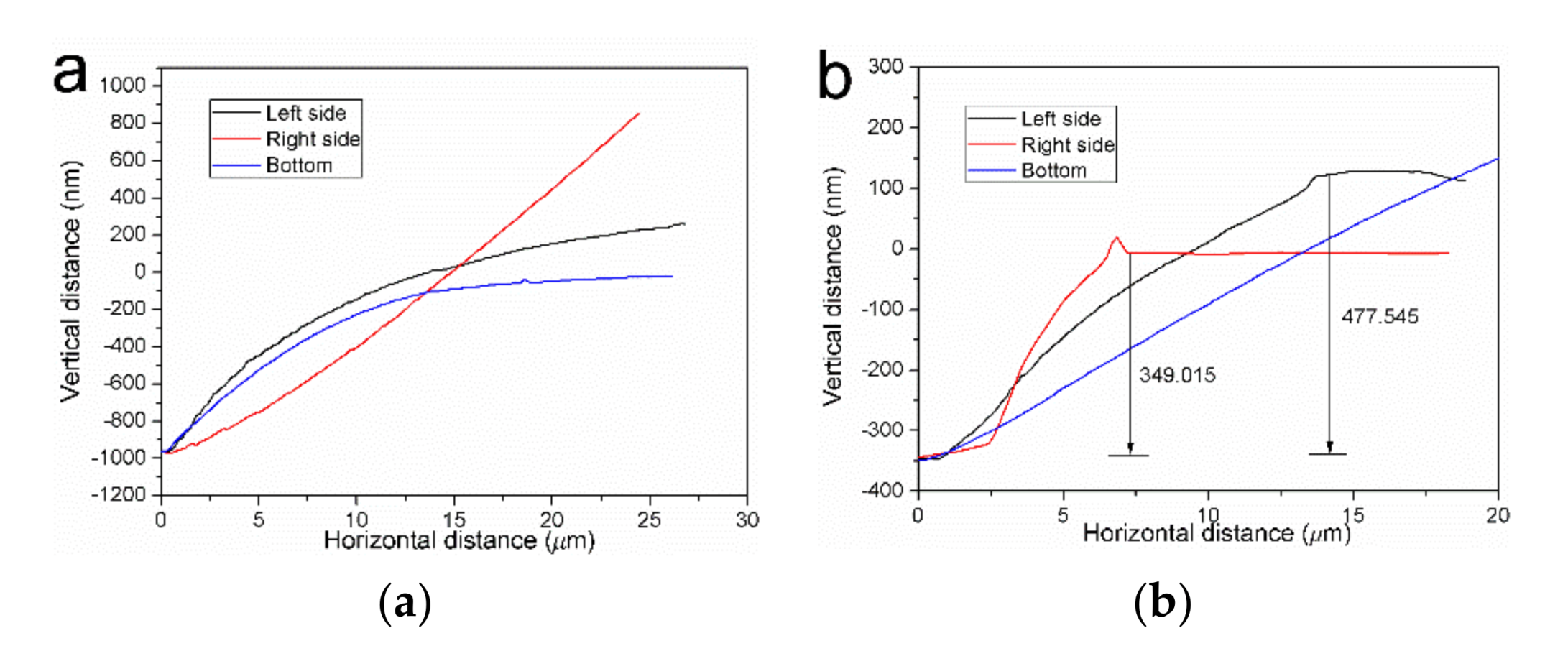


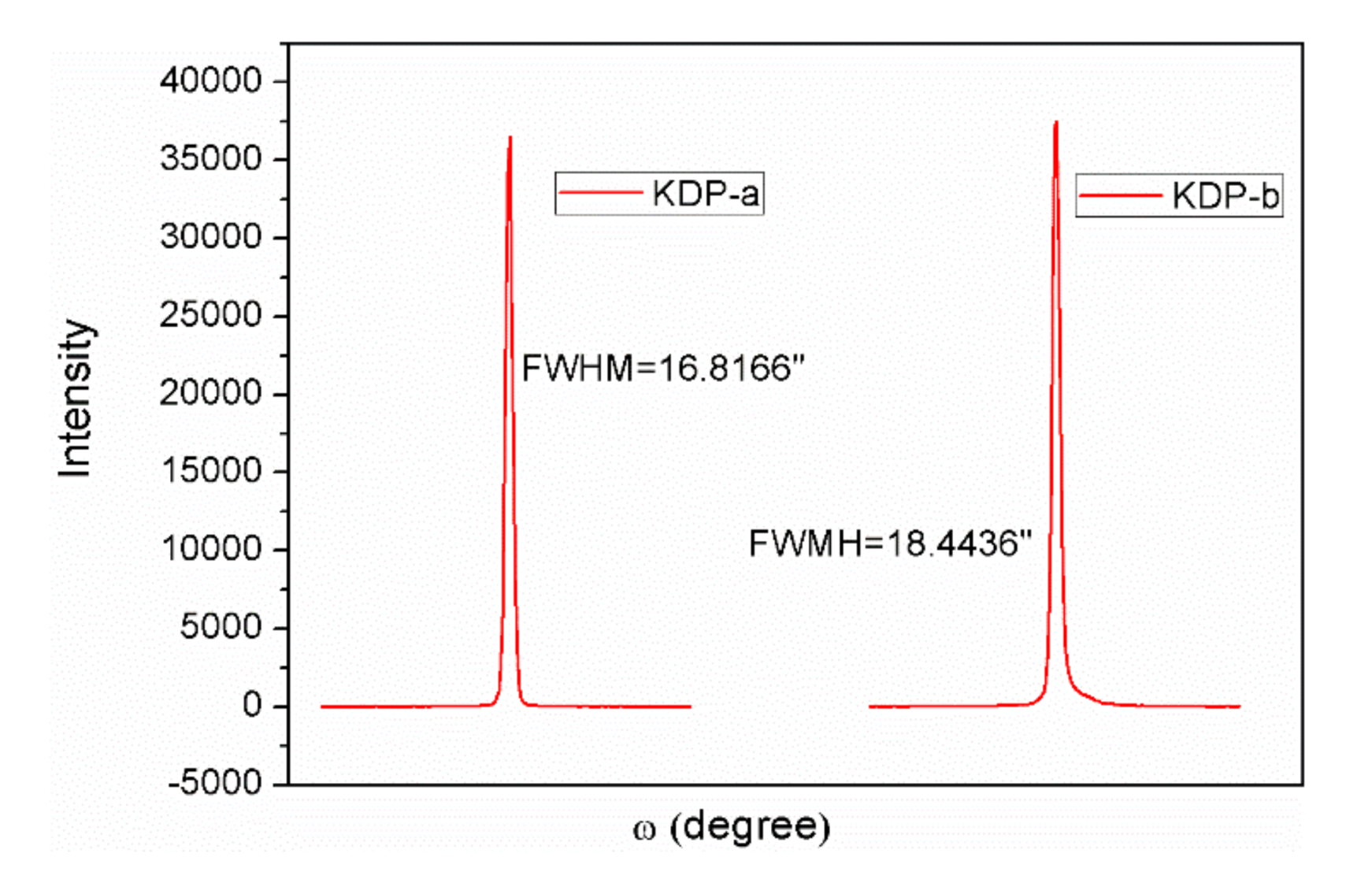
| Serial Number | Rotation Speed/rpm | Growth Rate/mm/day | Temperature Region/°C | Growth Period/day | Crystal Size/mm |
|---|---|---|---|---|---|
| a | 30 | 12 | 55.0–36.3 | 6 | 42 × 65 × 72 |
| b | 30 | 14 | 55.3–35.7 | 5 | 38 × 63 × 60 |
| c | 30 | 12 | 55.5–44.0 | 5 | 59 × 54 × 55 |
| d | 30 | 16 | 54.5–42.1 | 4 | 34 × 58 × 55 |
| Serial Number | Growth Parameter | Laser Parameter | 1-on-1 Laser Damage Threshold (J/cm2) |
|---|---|---|---|
| a | [101], 12 mm/day, 30 rpm | 1064 nm, 8.4 ns | 21.5 |
| b | [101], 14 mm/day, 30 rpm | 1064 nm, 8.4 ns | 21 |
| d | z-cut, 12 mm/day, 77 rpm | 1064 nm, 8.4 ns | 21 |
© 2020 by the authors. Licensee MDPI, Basel, Switzerland. This article is an open access article distributed under the terms and conditions of the Creative Commons Attribution (CC BY) license (http://creativecommons.org/licenses/by/4.0/).
Share and Cite
Qin, M.; Xu, X.; Yu, G.; Wang, B.; Cheng, W. Rapid Growth of KDP Crystals in the [101] Direction. Crystals 2020, 10, 108. https://doi.org/10.3390/cryst10020108
Qin M, Xu X, Yu G, Wang B, Cheng W. Rapid Growth of KDP Crystals in the [101] Direction. Crystals. 2020; 10(2):108. https://doi.org/10.3390/cryst10020108
Chicago/Turabian StyleQin, Mengfei, Xinguang Xu, Guangwei Yu, Bo Wang, and Wenyong Cheng. 2020. "Rapid Growth of KDP Crystals in the [101] Direction" Crystals 10, no. 2: 108. https://doi.org/10.3390/cryst10020108
APA StyleQin, M., Xu, X., Yu, G., Wang, B., & Cheng, W. (2020). Rapid Growth of KDP Crystals in the [101] Direction. Crystals, 10(2), 108. https://doi.org/10.3390/cryst10020108




